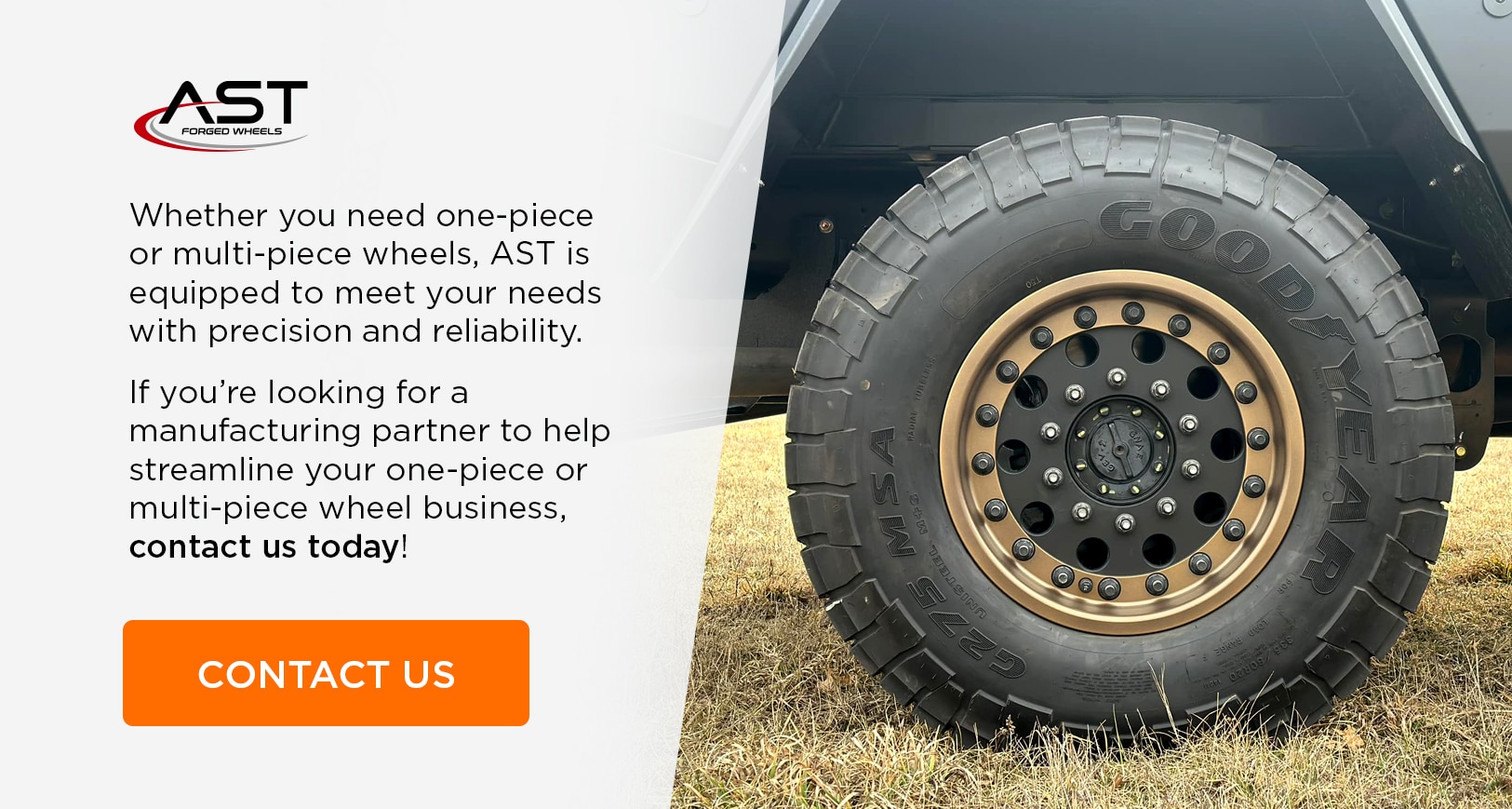One-Piece vs Multi-Piece Wheels
The decision between one-piece and multi-piece wheels is critical, as it directly impacts vehicle performance, customization options, and overall costs.
Each wheel type offers distinct advantages and trade-offs, depending on the specific application.
In this article, we will explore the key differences between one-piece and multi-piece wheels, focusing on their design, manufacturing processes, and the factors that influence a manufacturer’s decision.
Whether you are in the automotive aftermarket, military vehicle production, or heavy-duty truck wheel manufacturing, understanding these distinctions will help you make informed choices that align with your needs and goals.
Table of Contents
What Are One-Piece and Multi-Piece Wheels?
One-Piece Wheels: Definition and Key Characteristics
One-piece wheels, often referred to as monoblock wheels, are manufactured from a single piece of material, typically forged aluminum. This construction method results in a wheel that is both strong and lightweight, providing superior performance in terms of strength and durability.
The manufacturing process involves taking a preform, like a disc, and shaping it into the final wheel design through techniques such as flow forming or rotary forging. The absence of seams or joints in one-piece wheels contributes to their strength, making them ideal for high-performance applications where reliability is paramount.
Multi-Piece Wheels: Definition and Key Characteristics
Multi-piece wheels are composed of two or three separate components—typically an inner rim, an outer rim, and a wheel center —that are bolted together.
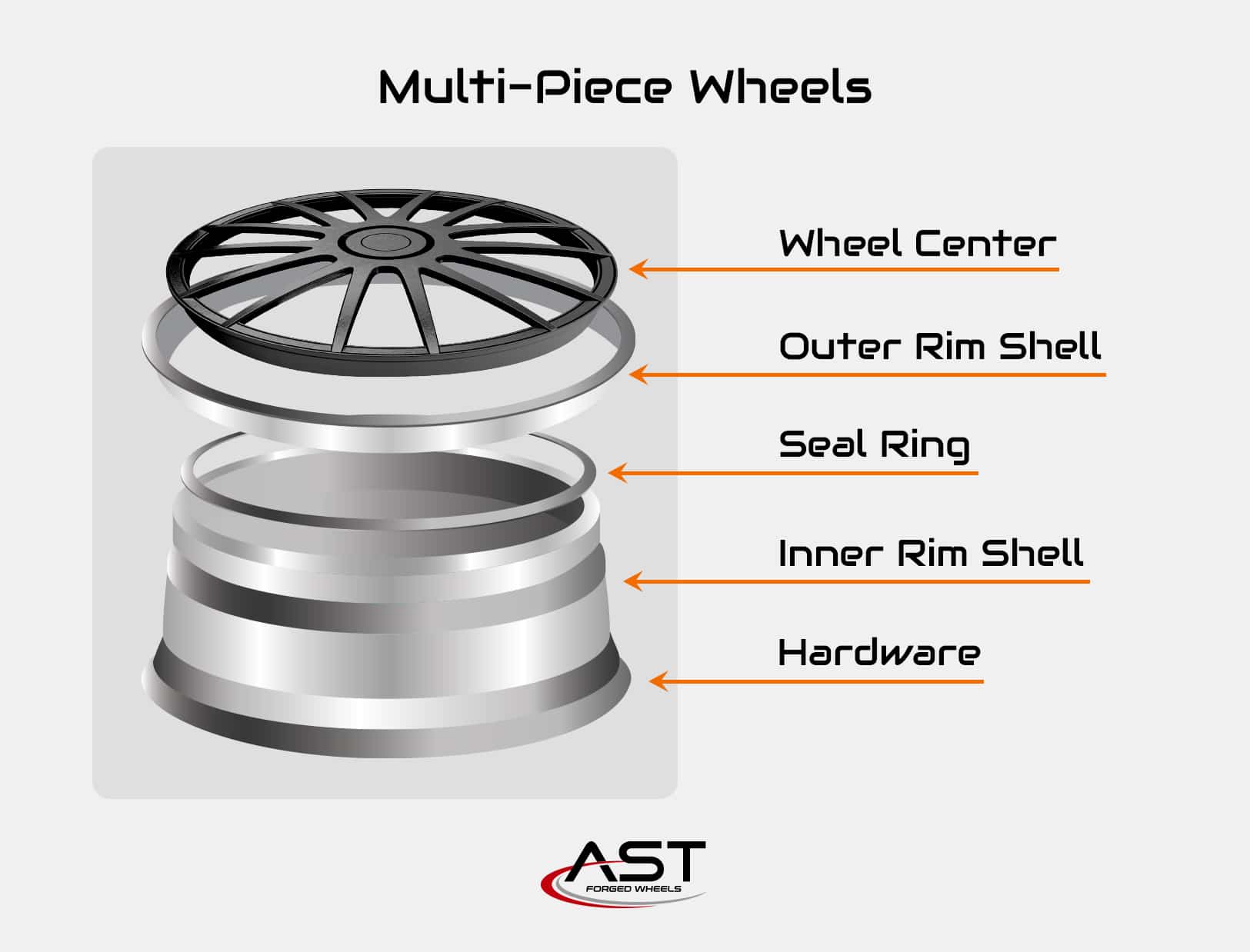
However, this design may result in a heavier wheel compared to one-piece wheels, and the assembly process requires precise engineering to avoid issues like leaks or balance problems.
1-Piece Wheels vs. 2-Piece Wheels vs. 3-Piece Wheels
When deciding between different types of wheels, it’s essential to understand the key distinctions between 1-piece, 2-piece, and 3-piece designs. Each type offers unique benefits and challenges to the manufacturer, depending on the specific needs of the application.
1-Piece Wheels
One-piece wheels are forged or cast from a single piece of material, typically aluminum. They are known for their strength, lightweight properties, and seamless design.
These wheels are ideal for high-performance applications where reliability and reduced weight are crucial.
The manufacturing process involves shaping a preform into the final wheel design through techniques like flow forming or rotary forging.
2-Piece Wheels
Two-piece wheels consist of a separate wheel center and outer rim that are bolted or welded together. This design offers more flexibility in terms of customization, allowing manufacturers to create different wheel widths and offsets by combining various center pieces with different outer rims.
Two-piece wheels provide a balance between strength and customization, making them popular in custom and performance-oriented applications.
3-Piece Wheels
Three-piece wheels take customization a step further by incorporating an additional component—typically an inner rim, outer rim, and center piece—that are bolted together. This modular design allows for maximum flexibility in terms of fitment, width, and offset, making them the preferred choice for those looking to achieve specific aesthetic or performance characteristics.
However, this design also introduces additional complexity in assembly, requiring precise engineering to avoid issues like leaks or balance problems.
Production of One-Piece vs. Multi-Piece Wheels
The manufacturing processes for one-piece and multi-piece wheels differ significantly, influencing their performance and customization options.
Manufacturing One-Piece Wheels:
One-piece wheels are forged from a single piece of material, providing superior strength and reduced weight.
Customization is generally limited to the initial design, but the result is a wheel optimized for high performance.
At AST we prefer using rotary forging over casting or flow forming for its ability to enhance the wheel’s grain structure, resulting in higher strength and durability.
Manufacturing Multi-Piece Wheels:
Multi-piece wheels are assembled from multiple components, allowing greater flexibility in customization.
Manufacturers can create wheels with varying widths and offsets by mixing and matching different inner and outer rims with the centerpiece.
This approach provides more options for fitment but requires precise assembly to ensure proper balance and strength.
Rotary forging is also the preferable process for multi-piece wheels to ensure optimal balance and strength. This method reduces weight while increasing structural integrity, allowing for precise engineering to avoid issues like leaks or imbalances.
The Impact of Customer Preferences
Customer preferences play a significant role in the choice between one-piece and multi-piece wheels. Wheel businesses need to consider the specific needs and desires of their target market when selecting which type of wheel to produce.
Customer Preferences for One-Piece Wheels
Customers who prioritize performance, strength, and a sleek, seamless design often prefer one-piece wheels. These wheels are particularly favored in high-performance and luxury vehicles where reliability and aesthetics are paramount.
 Customer Preferences for Multi-Piece Wheels
Customer Preferences for Multi-Piece Wheels
On the other hand, customers who value customization and flexibility tend to prefer multi-piece wheels. These wheels allow for a range of design options, including varying widths and offsets, which makes them popular in the custom vehicle market.
Some customers also appreciate the distinctive look of multi-piece wheels, which often feature visible bolts and a more complex design.
Manufacturers need to balance these preferences with the technical and economic considerations of wheel production, ensuring they offer the best solutions to meet market demands.
Common Pain Points in Wheel Manufacturing
Manufacturing both one-piece and multi-piece wheels involves unique challenges driven by production complexities and material considerations.
Pain Points in Manufacturing One-Piece Wheels:
The main challenge with one-piece wheels is the lack of flexibility in customization.
Since these wheels are forged from a single piece of material, achieving different designs or fitments can be difficult and costly.
Moreover, without proper guidance to achieve “near net shapes“—where the forged part is close to its final shape—additional material must be removed during finishing.
This can lead to increased material waste, inefficiencies, and higher manufacturing costs due to the extra machining required to achieve the desired final form.
Pain Points in Manufacturing Multi-Piece Wheels:
Multi-piece wheels provide greater design flexibility but are more challenging to assemble.
Ensuring a precise fit and seal between the components to prevent leaks or balance issues demands significant expertise.
The complexity of assembly can lead to higher labor costs, increased errors, and impacts on overall wheel performance.
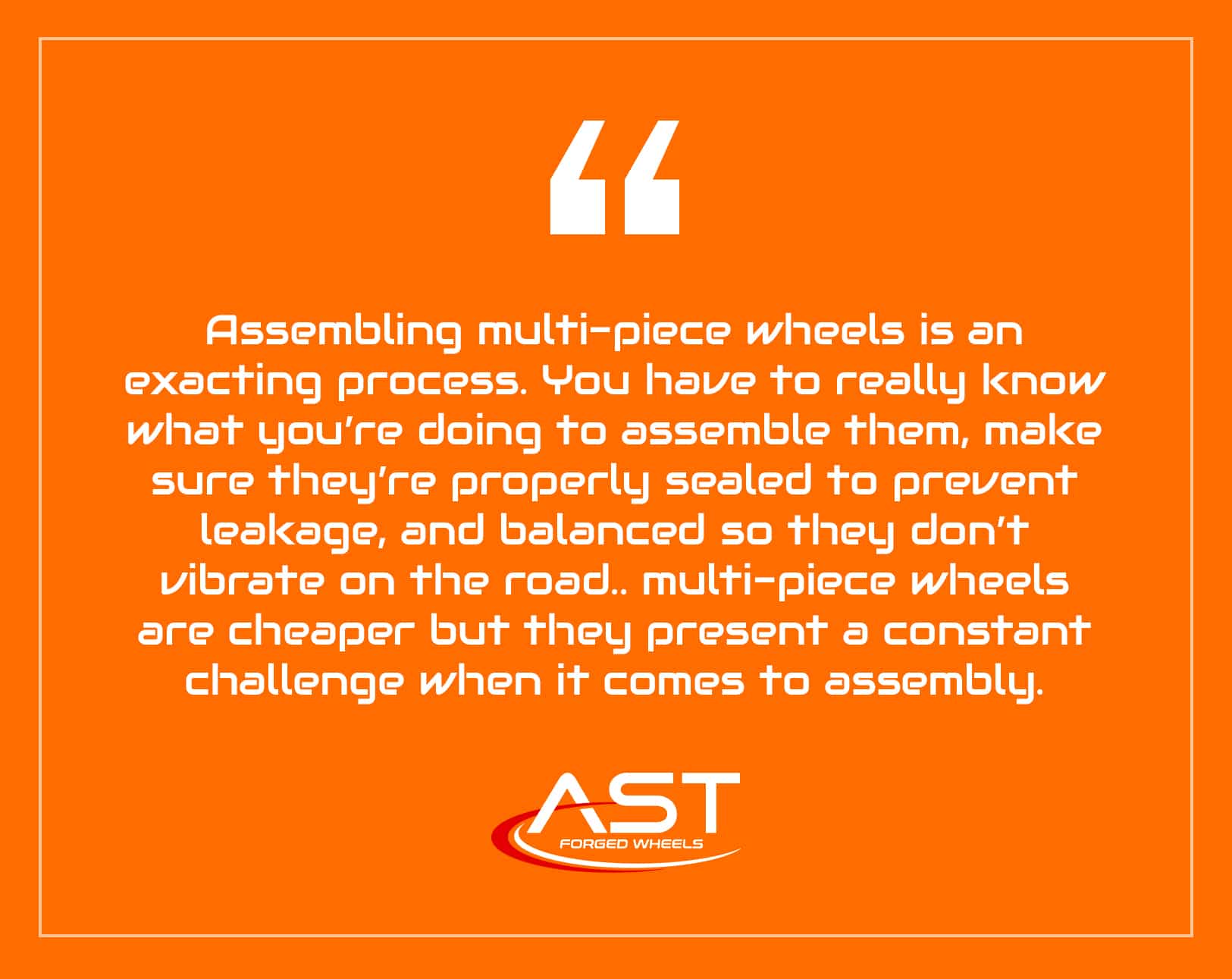
How Should Wheel Businesses Choose Between One-Piece and Multi-Piece Wheels?
The choice between one-piece and multi-piece wheels depends on customer preferences and the manufacturer’s need for flexibility.
One-piece wheels are ideal when a manufacturer is certain they want a specific design for high-performance vehicles that require wheel strength, weight reduction, and structural integrity.
Alternatively, multi-piece wheels offer flexibility to test and introduce various designs to their market without large inventories. In these cases, manufacturers may purchase large quantities of forged wheel centers (or “blanks”) and use them to produce many types of finished designs.
A manufacturing partner like AST can offer consultation to help you find the right balance to meet both market needs and production goals.
Customizing One-Piece vs. Multi-Piece Wheels
Customization plays a crucial role in the decision-making process for manufacturers when choosing between one-piece and multi-piece wheels.
Customization options for one-piece wheels are generally limited to the initial design phase. While these wheels can be styled in various ways, their monolithic construction restricts further modifications after production.
Multi-piece wheels offer significantly more flexibility in customization.
Manufacturers can mix and match different inner and outer rim components with the wheel center to create a wide variety of designs, widths, and offsets.
This modularity makes multi-piece wheels ideal for manufacturers who want to test different fitments and experiment with different visual styles for their market and customers.
The ability to interchange components also provides economic benefits, as it allows for the production of multiple wheel configurations from a single set of parts.
“AST leverages its extensive tooling and manufacturing capabilities to offer unparalleled flexibility in wheel customization, enabling manufacturers to meet diverse customer needs without incurring excessive costs.”
Manufacturing Technologies for One-Piece vs. Multi-Piece Wheels
The manufacturing technologies used to produce one-piece and multi-piece wheels are critical to their performance, durability, and cost-effectiveness.
One-piece wheels are typically manufactured using advanced forging processes, ideally rotary forging.
This process allow for the creation of a seamless, monolithic structure that offers superior strength and reduced weight. The rotary forging process also enhances the grain structure of the material, resulting in improved mechanical properties.
The manufacturing of multi-piece wheels involves forging the individual components—such as the center piece, inner rim, and outer rim—before assembling them.
The precision required in this process is higher due to the need for perfect alignment and sealing to prevent leaks and balance issues. The ability to mix and match components makes multi-piece wheel production more versatile but also more complex.
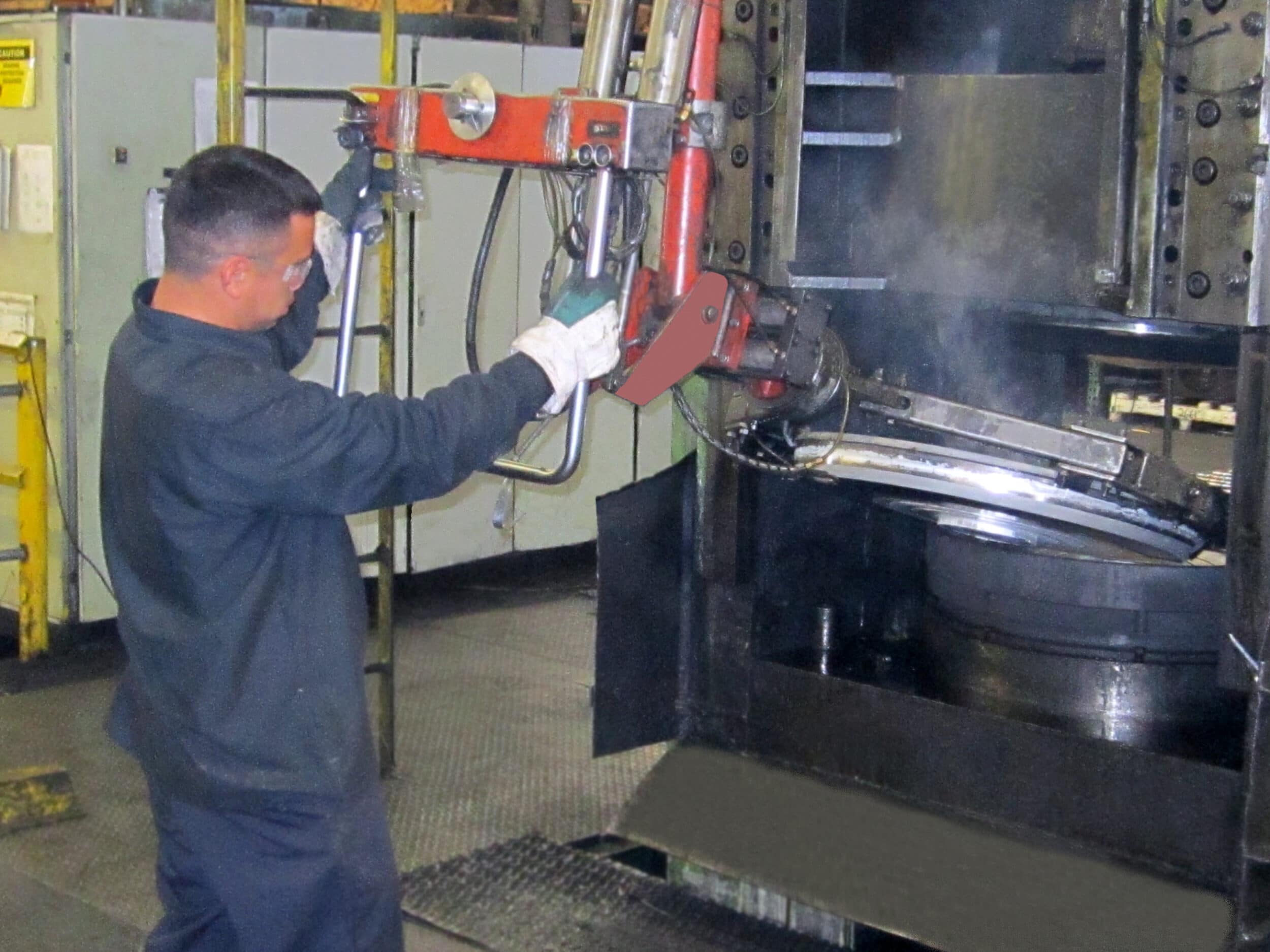
Assembly Challenges
Manufacturing and assembling multi-piece wheels present assembly challenges compared to one-piece wheels.
Multi Piece Wheel Assembly
The assembly process for multi-piece wheels involves precisely aligning and bolting together the separate components—inner and outer rims and the center piece. Ensuring these parts fit together perfectly is crucial to avoid leaks and balance issues.
Additionally, the sealing process, particularly in three-piece wheels, requires expertise to prevent air leakage and ensure durability. The complexity of this assembly can lead to increased labor costs and potential for errors.
One Piece Wheel Assembly
One-Piece Wheels: In contrast, one-piece wheels, being a single, seamless unit, do not have the same assembly challenges. Their monolithic design eliminates concerns about component alignment or sealing, resulting in a more straightforward production process.
This simplicity contributes to the overall reliability and performance of one-piece wheels, as there are fewer points of potential failure.
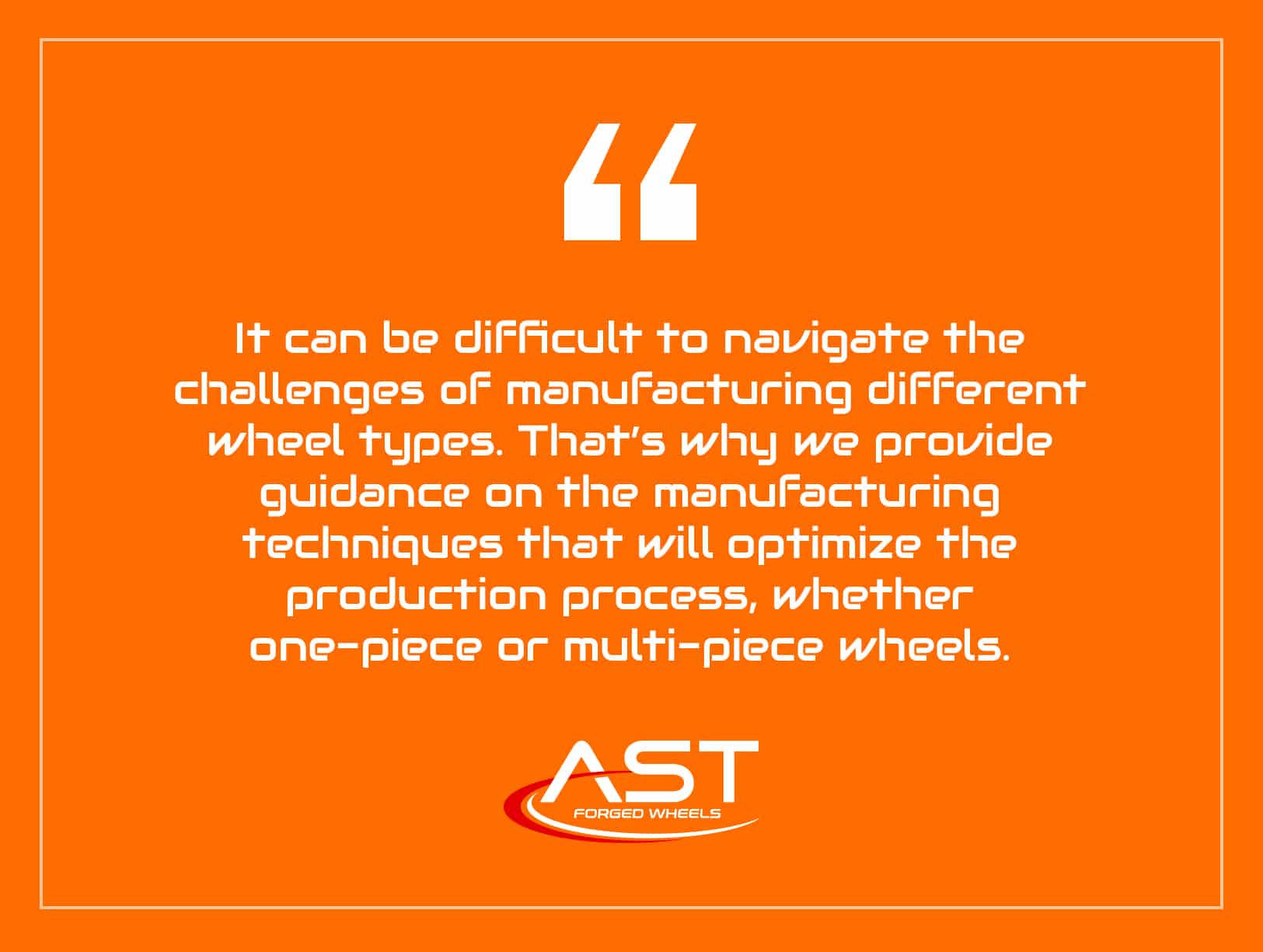
Wheel Choices for Heavy-Duty and Military Vehicles
In the heavy-duty and military vehicle markets, the choice between wheels is often dictated by the specific demands of the application.
 Multi Piece Military Wheel Applications
Multi Piece Military Wheel Applications
Multi-piece wheels are commonly used in military applications where functionality and flexibility are key. These wheels typically feature an inner and outer rim, bolted together, designed to accommodate run-flat mechanisms that are crucial in military operations.
The ability to disassemble and replace components in the field is a significant advantage, especially in harsh environments where quick repairs are necessary.
Tracked Military Wheels vs. Tactical Military Wheels
In the military vehicle sector, the distinction between tracked wheels and tactical wheeled vehicles is significant, influencing the choice between one-piece and multi-piece wheels.
Tracked vehicles, such as tanks and personnel carriers, use wheels (often referred to as road wheels or inserts) that fit inside the track system. These wheels are typically made from high-strength alloys to withstand the intense mechanical stress and wear associated with track movement. Multi-piece configurations may be used, but durability and ease of replacement are key considerations.
Tactical wheeled vehicles, like Humvees, rely more on traditional multi-piece or one-piece wheels, depending on the mission requirements. Multi-piece wheels are often preferred for their flexibility in field repairs, while one-piece wheels are chosen for their strength and reliability in heavy-duty applications.
AST provides specialized, USA-made wheel solutions for both tracked and tactical military vehicles, ensuring that each wheel type meets the rigorous demands of military operations.
Final Thoughts
For wheel manufacturers, choosing between one-piece and multi-piece wheels involves a complete understanding of the unique needs of their market and the flexibility that will be required for production.
One-piece wheels offer strength and reliability for specific, high-performance applications, while multi-piece wheels provide adaptability to cater to varied customer demands and design experimentation.
AST partners with manufacturers to provide expert guidance on wheel selection, helping them balance production needs with market demands and deliver high-quality, tailored wheel solutions efficiently.
With extensive experience and advanced manufacturing capabilities, we deliver high-quality wheel solutions tailored to a variety of applications. Whether you need one-piece or multi-piece wheels, AST is equipped to meet your needs with precision and reliability.
If you’re looking for a manufacturing partner to help streamline your one-piece or multi-piece wheel business, contact us today!



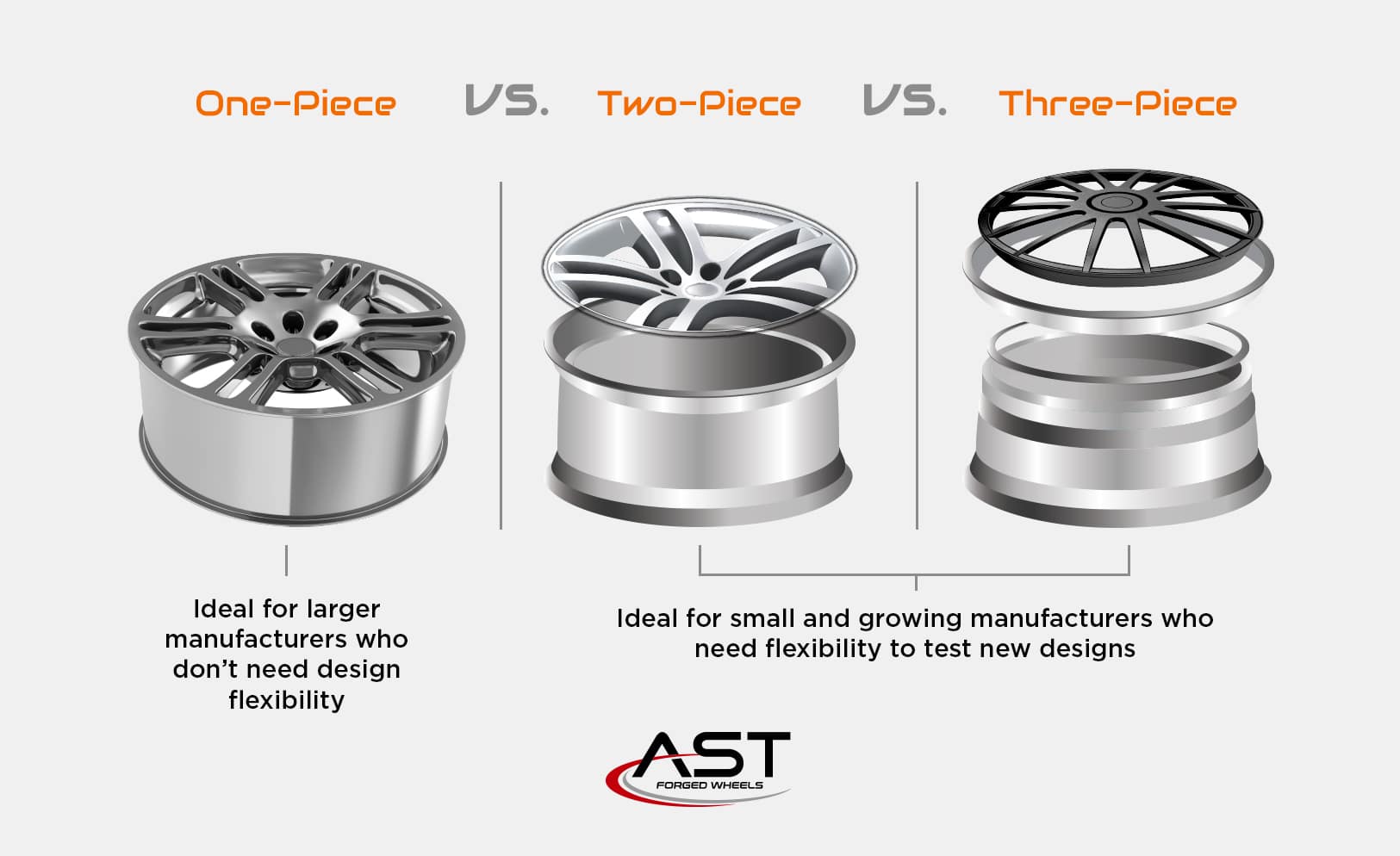



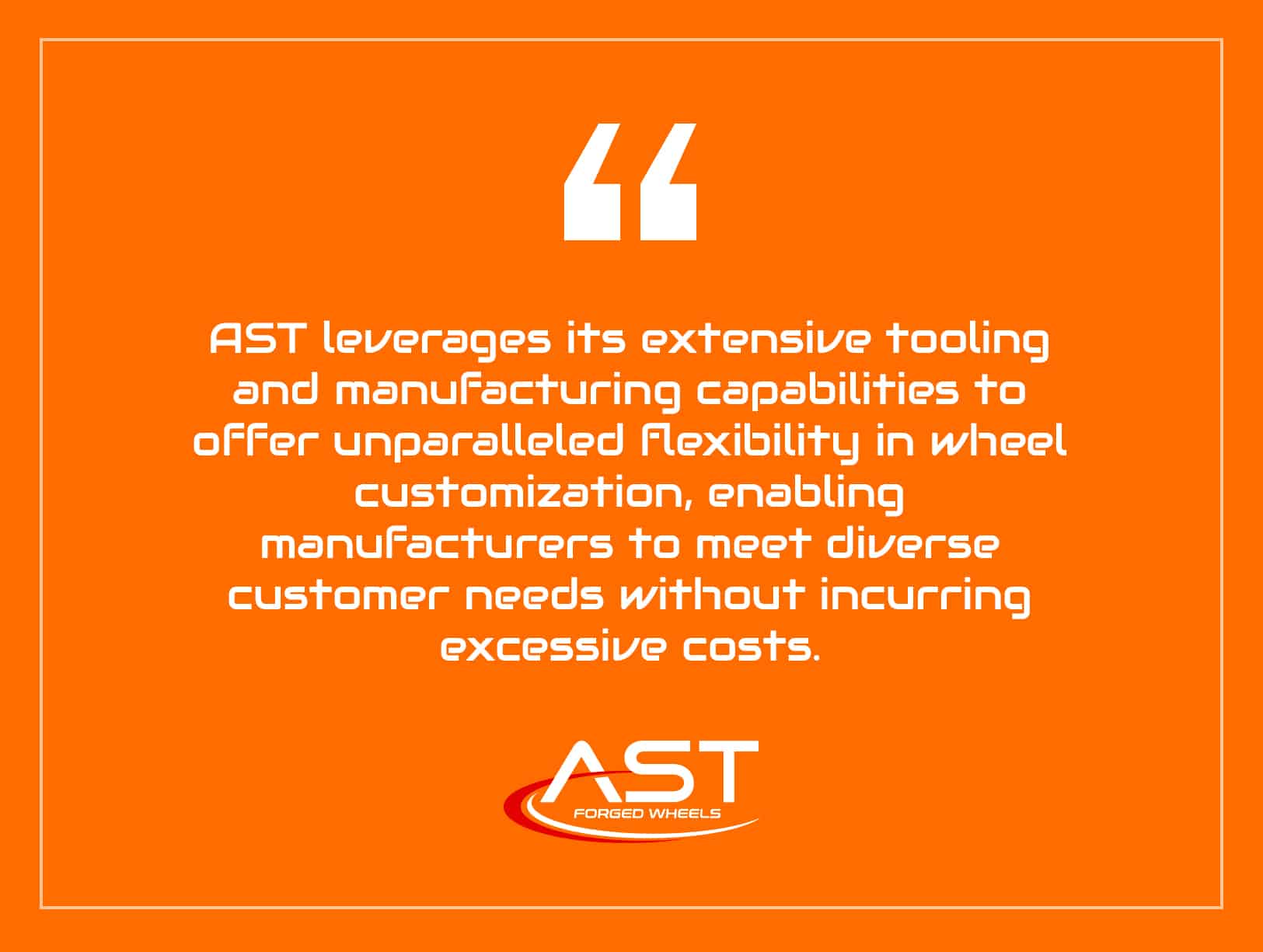
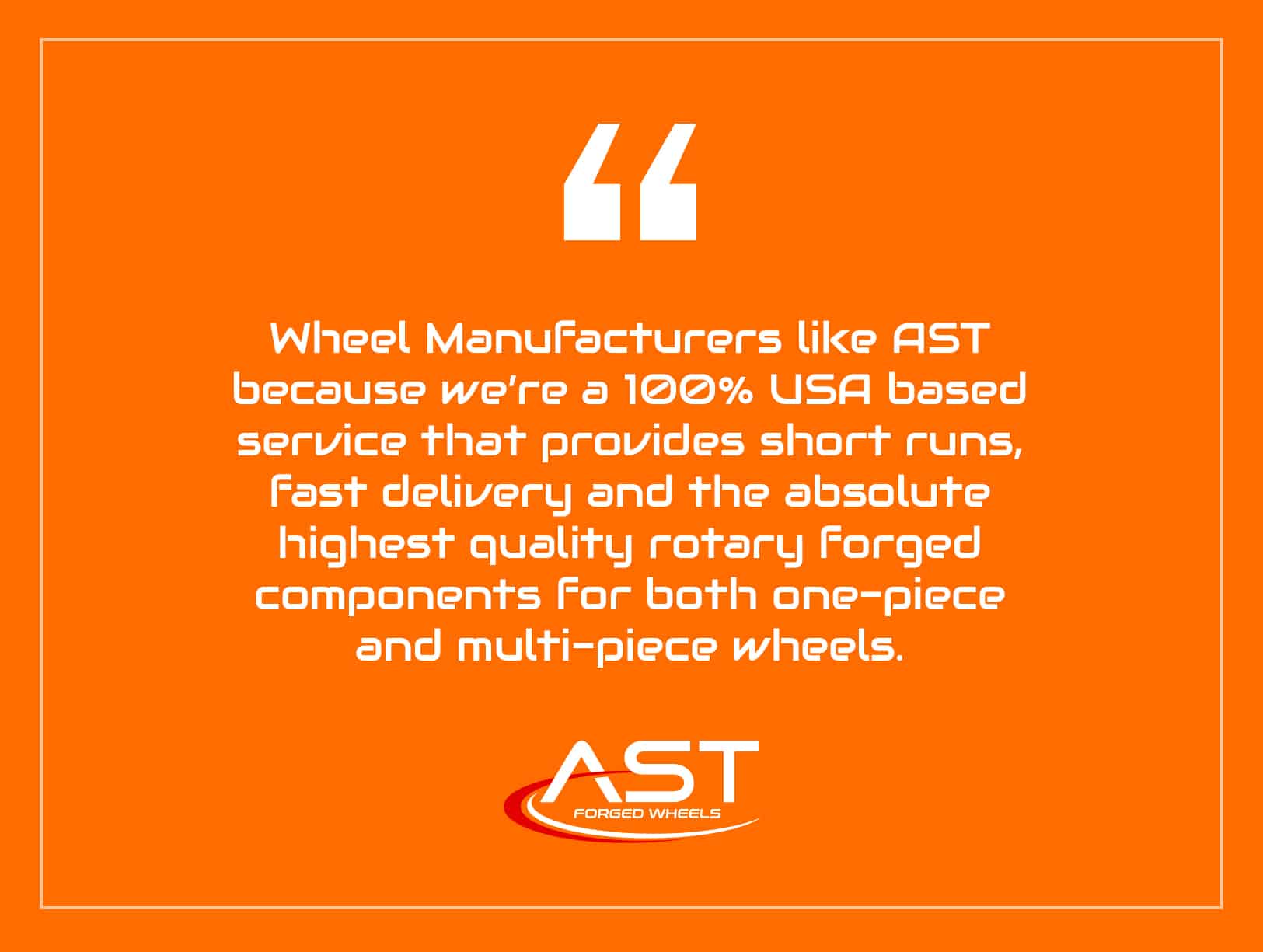
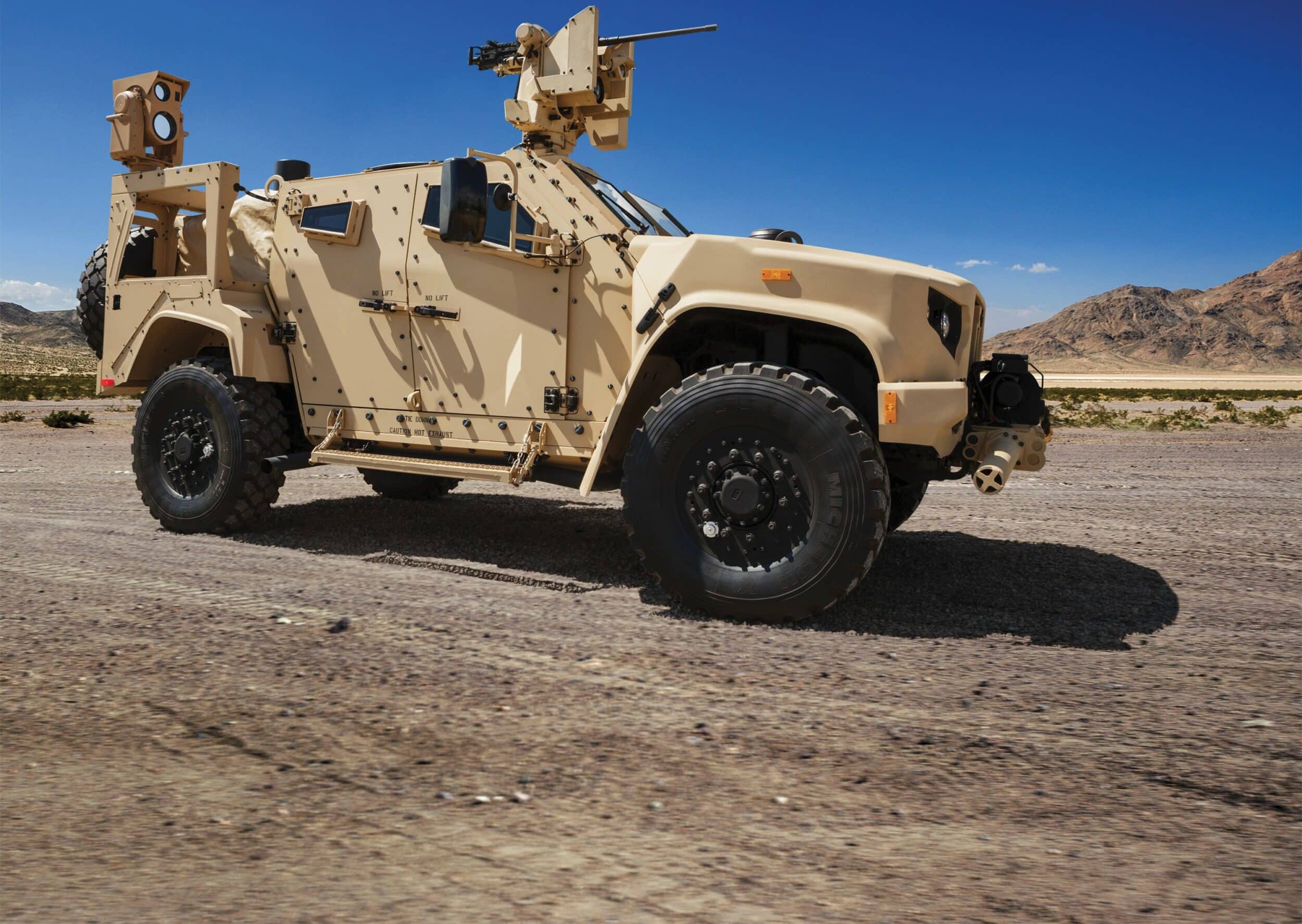 Multi Piece Military Wheel Applications
Multi Piece Military Wheel Applications
